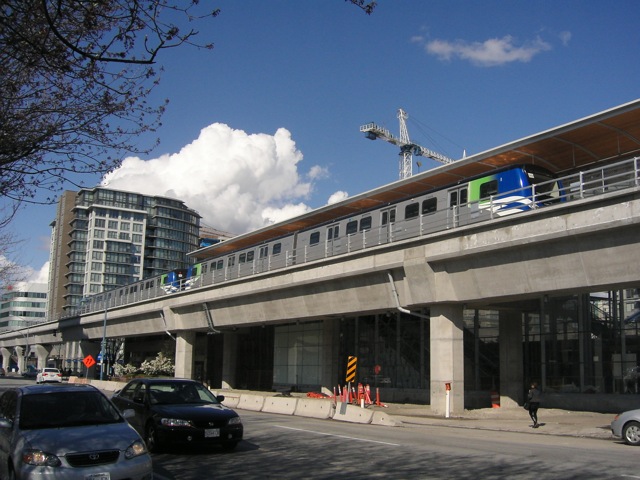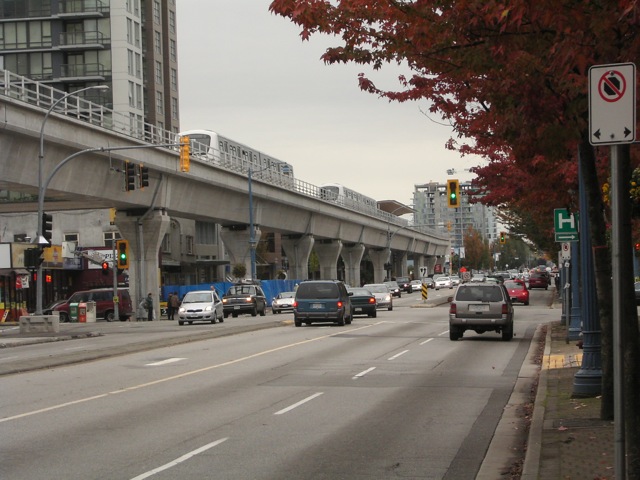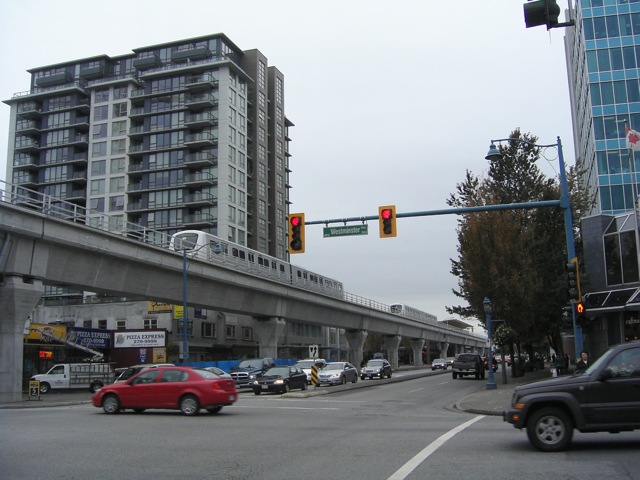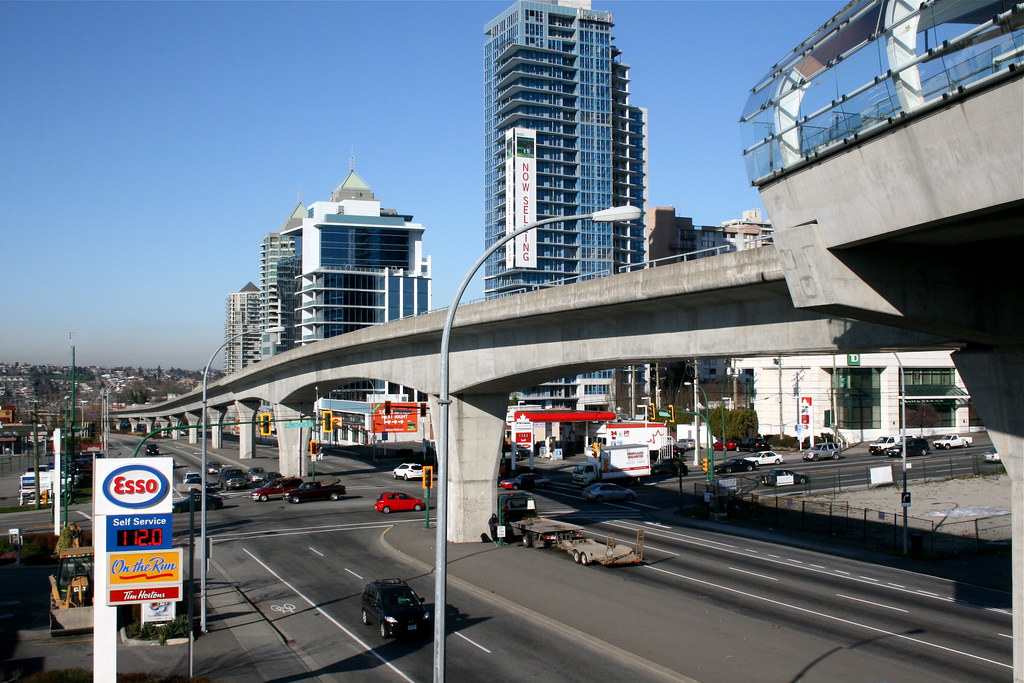My point is that a side of street station
enables a shorter more pedestrian friendly built form.
It is neither here nor there that someone else decided to build a side of street station with a mezzanine - that's their decision to do so (it doesn't mean a smaller scale side-of-street station is impossible).
The areas where a massive mezzanine station may be inappropriate are in existing urban fabrics or areas where the future built form is not monolithic in scale. i.e. if the station willl be surrounded by existing or future residential and retail buildings.
In the case of stations straddling a street - it would be very rare to have a station without a mezzanine. If that station has a centre platform - it would need a mezzanine. If that station has two outside platforms, it technically does not need a mezzanine, but cross platform movements would be impossible (the passenger would have to exit the station, cross the street at grade and go back up the other side).
Schematic cross sectional profiles of various station types are shown here;
http://books.google.ca/books?id=zFb...age&q=rapid transit mezzanine station&f=false
Here are some pics from Tafryn Palecloud's Canada Line blog of the No. 3 Rd. guideway - low profile compared to Skytrain guideways where stations have mezzanines:
http://canadalinephotos.blogspot.co...dated-max=2009-04-05T00:31:00Z&max-results=20
The elevation of the guideway is similar to the podiums of adjacent buildings so it melds with the built form nearby.
Here's Holdom Station (side of street) on the Millennium Line (it is the station right after Brentwood Station)
http://maps.google.ca/maps?f=q&sour...oid=I2XTJ8GMjmumU8BhZayipA&cbp=12,241.18,,0,5
Compare to the guideway at Brentwood Station (much taller section of guideway on the same line)
http://maps.google.ca/maps?f=q&sour...d=0_AiQhvOCdGOOk_XVWY5iA&cbp=12,84.07,,0,5.34
Also Metrotwon Station in Burnaby (albeit with the older style thinner twinned single guideways):
http://maps.google.ca/maps?f=q&sour...oid=yLiPxnUoDqcstkfMejrH_g&cbp=12,154.16,,0,5
The scale is quite a bit different between the two built forms.
Here's a couple more pics of the guideway near Brentwood Station by Metro-One on the SSP forum.
In terms of height, the traffic signals may be a useful reference, although I don't know if they are of similar height.
See also Honolulu's designs for fairly open-air mezzanine stations in a roadway median.
I think that Toronto stations would be more closed in due to the winter climate.
http://www.honolulutransit.org/pdfs/stations wkshp waipahu iii final.pdf








